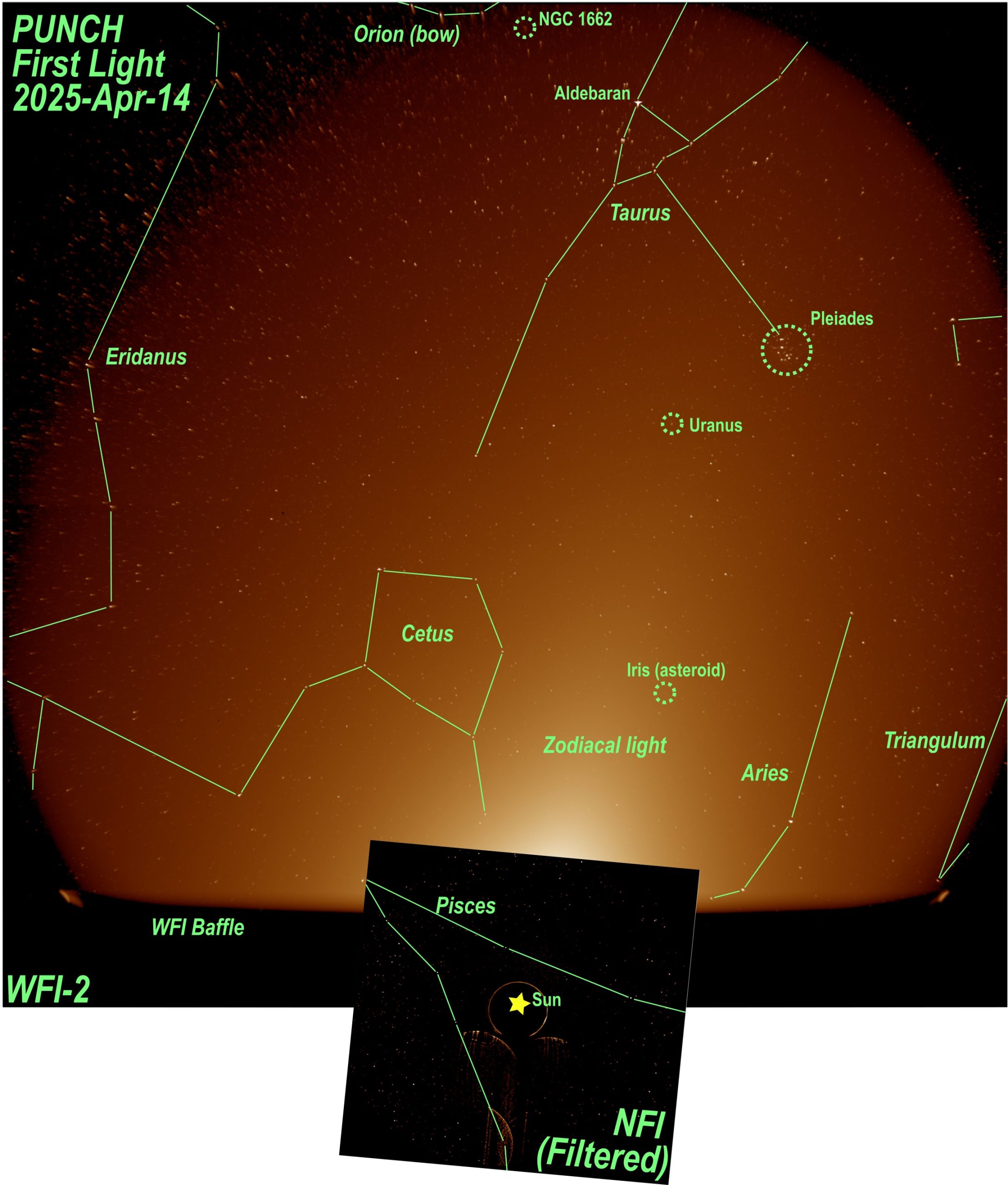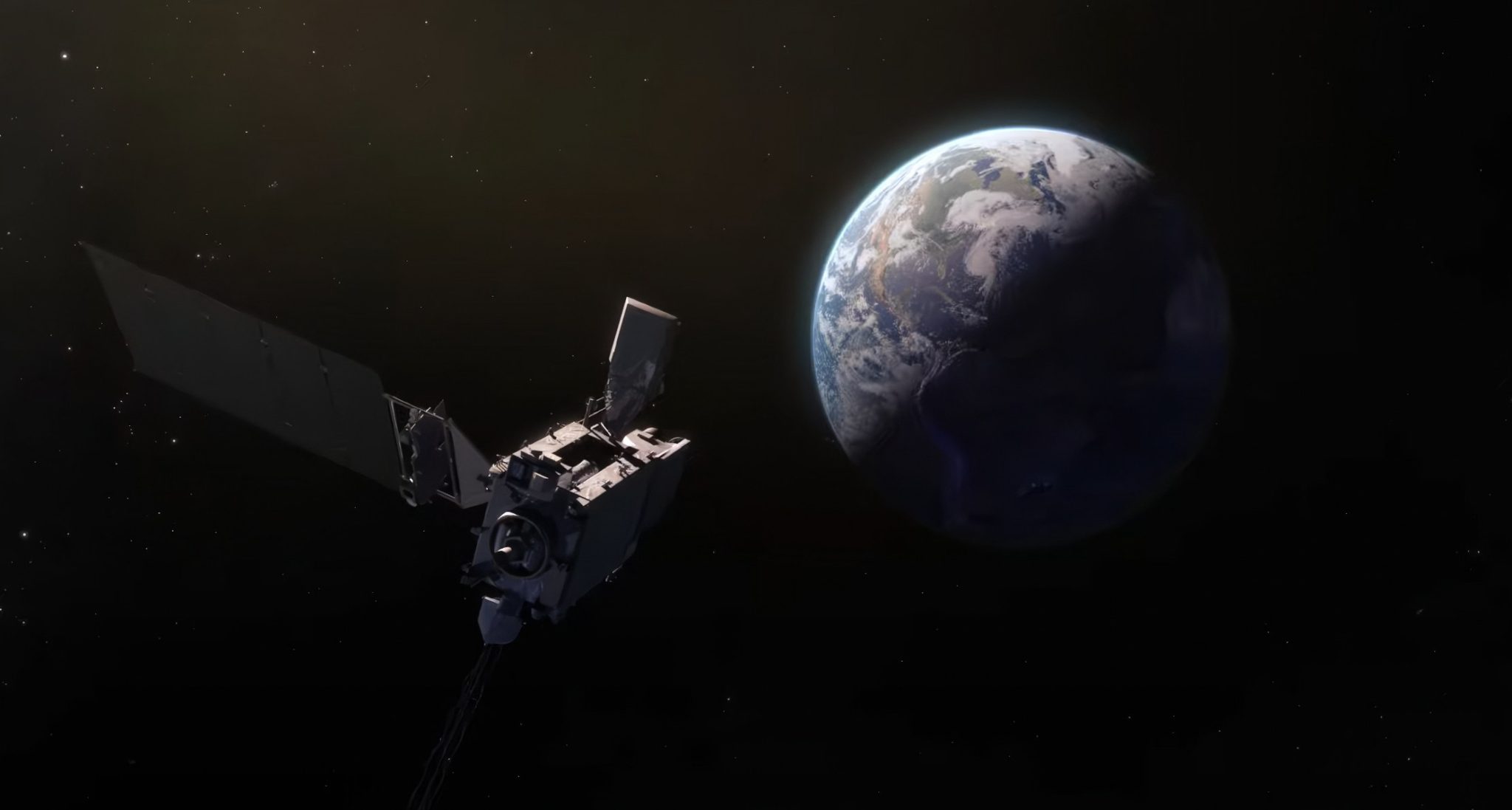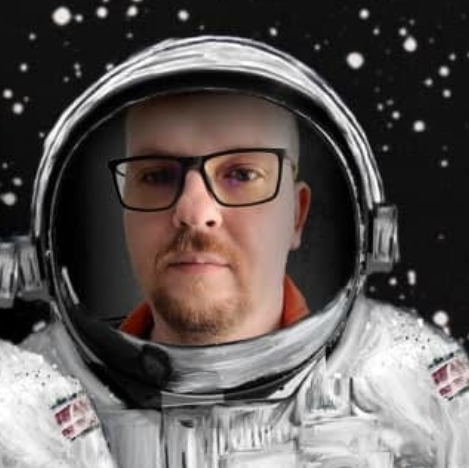The newest mission PUNCH (Polarimeter to Unify the Corona and Heliosphere), launched in March 2025, has already transmitted the first images of the Sun, which open a new page in the study of our star. The mission’s four satellites, linked together in low-Earth orbit, have already begun to capture the most mysterious solar corona and wind phenomena.

Each of the four suitcase-sized instruments is equipped with a coronagraph and thermal imagers. Being at great distances from each other together, the PUNCH mission’s instruments create a “super telescope” with a diameter of more than 12,900 kilometers, capable of studying in detail the corona transition in the solar wind – a stream of charged particles moving at speeds of more than 1.6 million km/h. These particles, when they reach Earth, create auroras, but also dangerous geomagnetic storms that threaten satellites and power grids.

The solar wind at the coronal boundary has a brightness of 0.1% of the Milky Way, so it has only been able to be studied fragmentarily so far. For the first time, PUNCH will allow its dynamics to be tracked in real time, helping to predict solar storms. Such predictions are critical to protecting satellites, astronauts, and Earth’s infrastructure.
PUNCH water engines
To filter out excess light, such as from stars or cosmic dust, PUNCH uses unique image processing algorithms. But the most interesting thing is the miniature engines of the vehicles that run on water. Although they give a weak acceleration of only 2 cm/s, this is enough to stabilize the vehicles in orbit. “This is the first mission with such environmentally friendly engines,” emphasizes Craig DeForest, project manager.
The 90-day testing phase is now underway. Full-fledged scientific work will begin in June. But the first images are already impressive: they show “soft glow” – glare from the cosmic dust around the Sun.

The PUNCH mission is not just about technological breakthroughs. It brings us closer to solving a major mystery of the Sun: how its corona, red-hot to millions of degrees, generates the winds that shape the cosmic weather of the entire solar system. Perhaps it is this data that will help save the Earth from future solar storms.
We previously reported on how Solar Orbiter revealed unprecedented details of the solar corona.
According to swri.org


